Tools Required
| • | J 8037 Piston
Ring Compressor |
Piston Selection
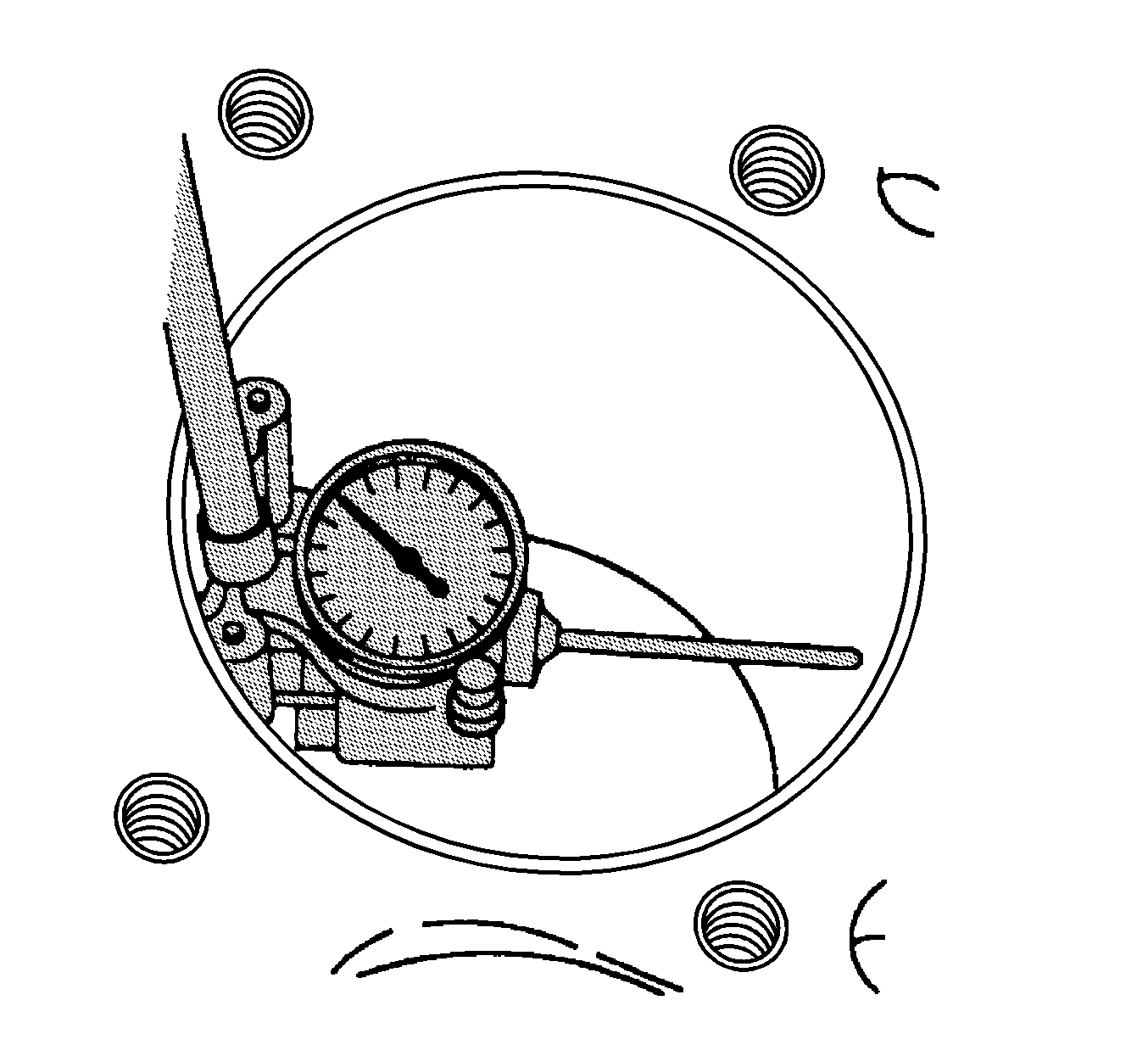
Important: Measurements of all components should be taken with the components at
normal room temperature.
For proper piston fit, the engine block cylinder bores must not have
excessive wear or taper.
A used piston and pin set may be reinstalled if, after cleaning and
inspection, they are within specifications.
- Inspect the engine block cylinder bore. Refer to
Engine Block Cleaning and Inspection
.
- Inspect the piston and the piston pin. Refer to
Piston, Connecting Rod, and Bearing Cleaning and Inspection
.
- Using the J 8087
measure the cylinder bore diameter. Measure at a point 64 mm (2.5 in)
from the top of the cylinder bore.
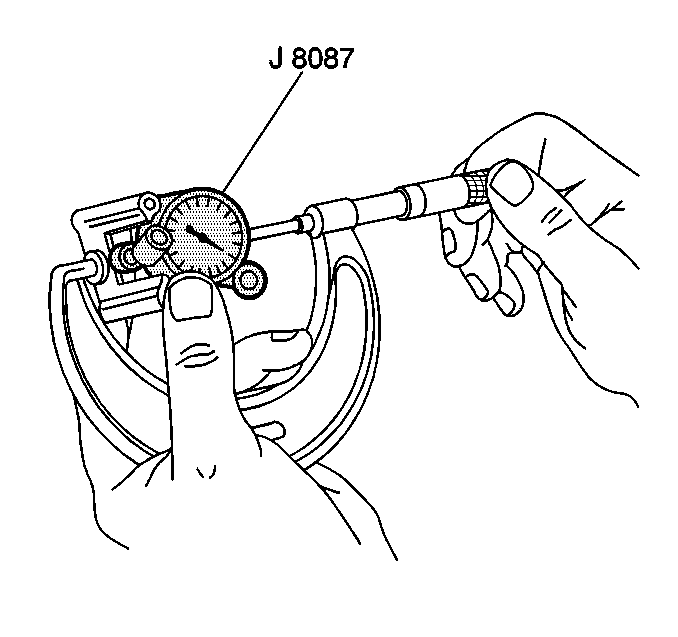
- Measure the J 8087
with a micrometer and record the reading.
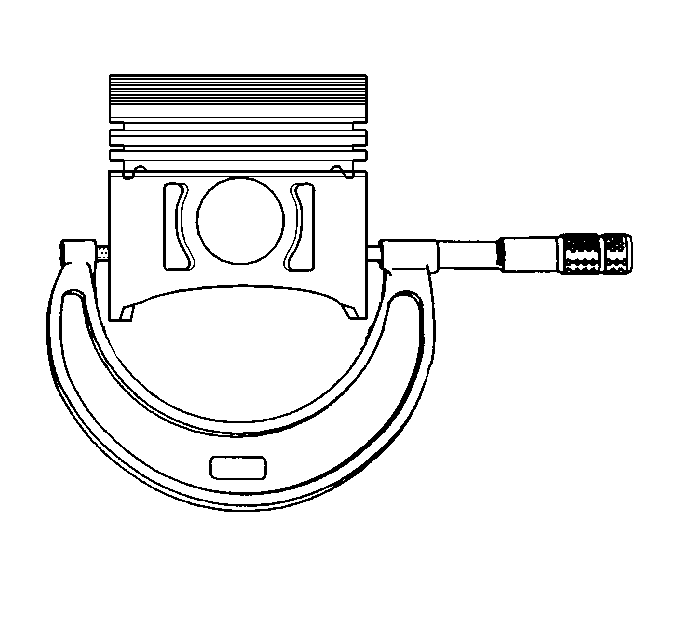
- With a micrometer or caliper
at a right angle to the piston, measure the piston 42 mm (1.68 in)
from the top of the piston.
- Subtract the piston diameter from the cylinder bore diameter in
order to determine piston-to-bore clearance.
- For proper piston-to-bore clearance refer to
Engine Mechanical Specifications
.
- If the proper clearance cannot be obtained, select another piston
and measure for the clearances.
- If the proper fit cannot be obtained, hone the cylinder bore or
replace the cylinder block.
- When the piston-to-cylinder bore clearance is within specifications,
mark the top of the piston using a permanent marker for installation to the
proper cylinder.
Refer to Separating Parts.
Installation Procedure
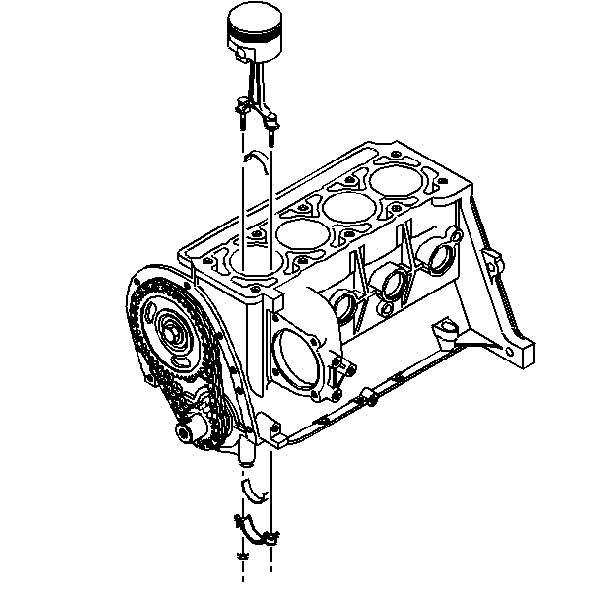
- Install the connecting
rod bearings. Use the proper size bearings.
| 1.1. | Install the bearing inserts into the connecting rod and the connecting
rod cap. |
| 1.2. | Lubricate the connecting rod bearings with engine oil. |
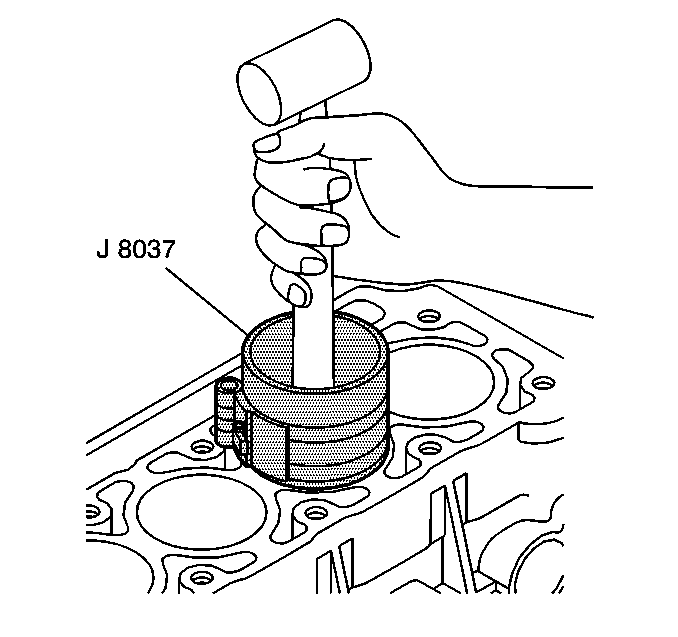
- Install the piston and
the connecting rod to the correct bore.
| 2.1. | Slide a piece of 9.5 mm (0.375 in) fuel or vacuum
hose over the connecting rod bolts. This protects the crankshaft journal during
piston and connecting rod installation. |
| 2.2. | Stagger each piston ring end gap equally around the piston. |
| 2.3. | Lubricate the piston and the piston rings with engine oil. |
| 2.4. | Install J 8037
over
the piston. Do not disturb the piston ring end gap location. |
| 2.5. | The piston must be installed so that the mark on the top of the
piston faces the front of the engine. |
| 2.6. | Place the piston in its matching bore. |
| 2.7. | Tap the piston into its bore with a hammer handle. Guide the connecting
rod to the connecting rod journal while tapping the piston into place. |
| 2.8. | Hold the J 8037
against
the engine block until all the rings have entered the cylinder bore. |
| 2.9. | Remove the vacuum hose from the connecting rod bolts. |
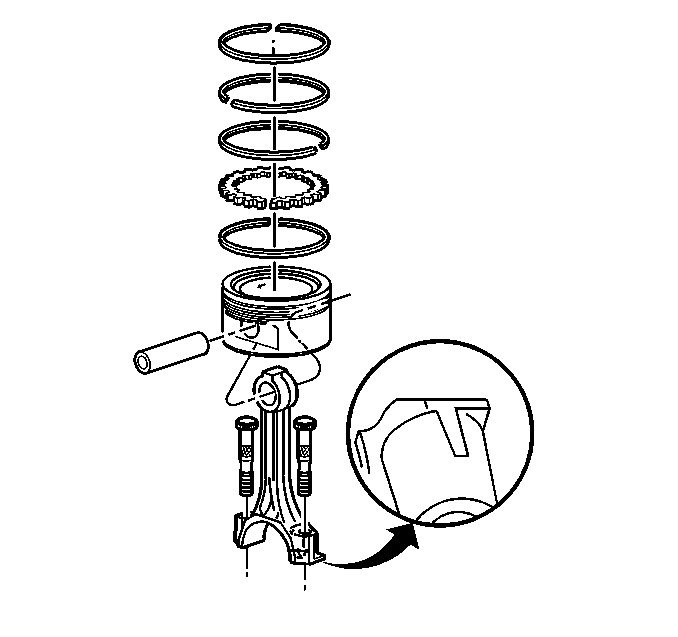
Important: Ensure that the connecting rod cap is properly oriented on the connecting
rod. The tab on the connecting rod should be oriented toward the left (exhaust
manifold) side of the engine.
- Install the connecting rod cap.
Notice: Use the correct fastener in the correct location. Replacement fasteners
must be the correct part number for that application. Fasteners requiring
replacement or fasteners requiring the use of thread locking compound or sealant
are identified in the service procedure. Do not use paints, lubricants, or
corrosion inhibitors on fasteners or fastener joint surfaces unless specified.
These coatings affect fastener torque and joint clamping force and may damage
the fastener. Use the correct tightening sequence and specifications when
installing fasteners in order to avoid damage to parts and systems.
- Install the connecting
rod bolt nuts.
Tighten
- Tighten the connecting rod bolt nuts to 52 N·m (38 lb ft).
- Loosen the connecting rod bolt nuts 1 full turn.
- Tighten the connecting rod bolt nuts to 52 N·m (38 lb ft).
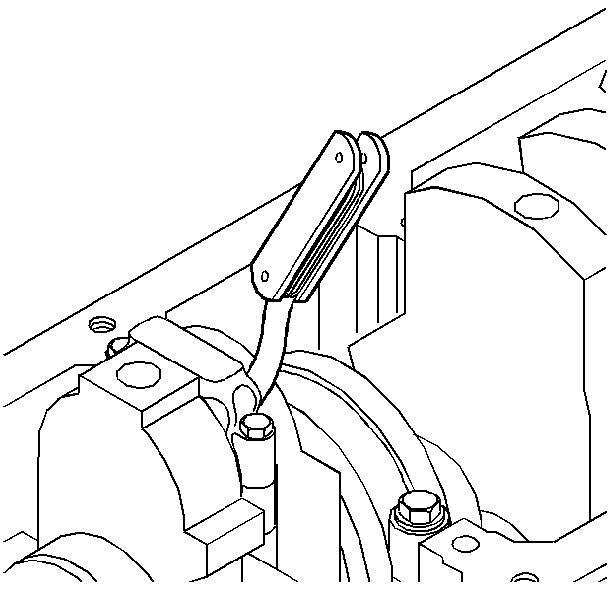
- Measure the connecting
rod side clearance with a feeler gauge.
The correct clearance is 0.10-0.38 mm (0.0039-0.0149 in).







